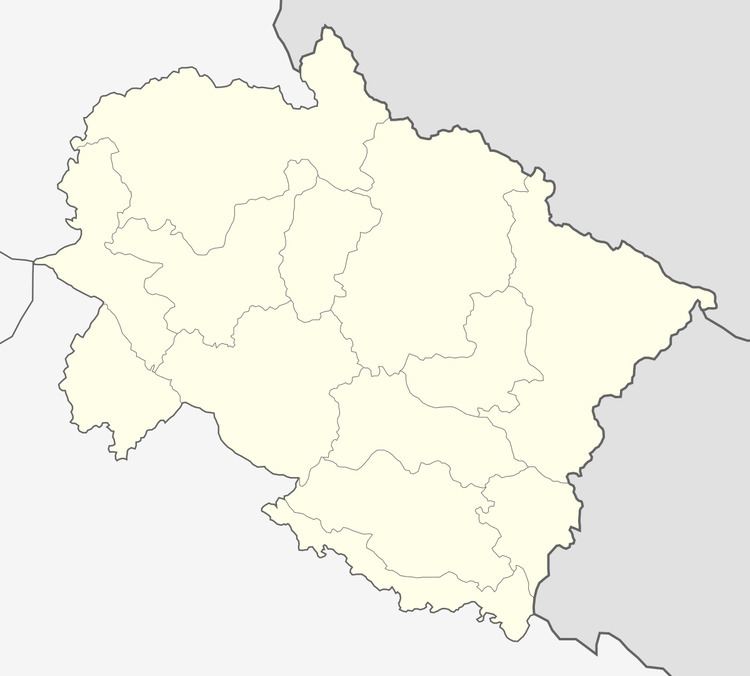Criteria vii, x Reference no. 335 Area 630.3 km² Phone 01389 222 179 | Type Natural Designated 1988 (12th session) Established 1982 Extension 2005 | |
 | ||
Official name Nanda Devi and Valley of Flowers National Parks | ||
Nanda devi national park area uttarakhand
The Nanda Devi National Park , established in 1982, is a national park situated around the peak of Nanda Devi (7816 m) in the state of Uttarakhand in northern India. The entire park lies at an elevation of more than 3,500 m (11,500 ft) above mean sea level.
Contents
- Nanda devi national park area uttarakhand
- Nanda devi national park himalayas fly through tour in google earth
- History
- Layout of the Nanda Devi Sanctuary
- Fauna
- Flora
- Within the sanctuary
- On the sanctuary wall
- Just outside the wall
- References
The National Park was inscribed a World Heritage Site by UNESCO in 1988. The latter was expanded and renamed to Nanda Devi and Valley of Flowers National Parks in 2005.
Within the National Park lies the Nanda Devi Sanctuary, a glacial basin surrounded by a ring of peaks between 6,000 metres (19,700 ft) and 7,500 m (24,600 ft) high, and drained by the Rishi Ganga through the Rishi Ganga Gorge, a steep, almost impassable defile.
The National Park is embedded in the 2,236.74 km2 (863.61 sq mi) sized Nanda Devi Biosphere Reserve, which, in turn, is encompassed in the 5,148.57 km2 (1,987.87 sq mi) buffer zone around the Nanda Devi and Valley of Flowers National Parks UNESCO site.
Nanda devi national park himalayas fly through tour in google earth
History
The first recorded attempt to explore the sanctuary was in 1883 by W. W. Graham, who could proceed only up to Rishi Ganga. Other attempts by explorers in 1870, (T. G. Longstaff) 1926, 1927 and 1932 (Hugh Ruttledge) did not fetch fruitful results. Eric Shipton and H. W. Tilman entered the inner sanctuary through Rishi Ganga in 1934, thus opening the extensive exploration in the sanctuary. In 1939, the area was declared as a game sanctuary.
Layout of the Nanda Devi Sanctuary
The Nanda Devi Sanctuary within the National Park can be divided into two parts, Inner and Outer. Together, they are surrounded by the main sanctuary wall, which forms a roughly square outline, with high, continuous ridges on the north, east, and south sides. On the west side, less high but still imposing ridges drop from the north and south toward the Rishi Ganga Gorge, which drains the sanctuary towards the west.
The Inner Sanctuary occupies roughly the eastern two-thirds of the total area, and contains Nanda Devi itself and the two major glaciers flanking the peak, the Uttari (north) Rishi Glacier and the Dakshini (south) Rishi Glacier. These are fed by the smaller Uttari Nanda Devi and Dakshini Nanda Devi Glaciers respectively. This region was already inhabited by the aryanic, Mongolian and Himalayan indigenous peoples as per vedas and natural history but the first recorded entry of the British into the Inner Sanctuary was by Eric Shipton and H. W. Tilman in 1934, via the Rishi Gorge.
The Outer Sanctuary occupies the western third of the total sanctuary, and is separated from the Inner Sanctuary by high ridges, through which flows the Rishi Ganga. It is split in two by the Rishi Ganga; on the north side lies the Ramani Glacier, flowing down from the slopes of Dunagiri and Changabang, and on the south lies the Trisul Glacier, flowing from the peak of the same name. This portion of the sanctuary is accessible to the outside (though requiring the crossing of a 4,000 m (13,000 ft) pass). The first serious climbing expedition to pass through the Outer Sanctuary was that of T. G. Longstaff, who climbed Trisul I in 1907 via the eponymous glacier.
Fauna
Common larger mammals are Himalayan musk deer, mainland serow and Himalayan tahr. Goral are not found within, but in the vicinity of the park. Carnivores are represented by snow leopard, Himalayan black bear and perhaps also brown bear. Langurs are found within the park, whereas rhesus macaque are known to occur in the neighboring areas of the park. In a scientific Expedition in 1993, a total of 114 bird species was recognized.
Flora
Nanda Devi National Park is home to a wide variety of flora. Some 312 floral species that include 17 rare species have been found here. Fir, birch, rhododendron, and juniper are the main flora.
Vegetation is scarce In the inner sanctuary due to the dryness of the conditions. One will not find vegetation near Nanda Devi Glacier. Ramani, alpine, prone mosses and lichens are other notable floral species found in Nanda Devi National Park.
Within the sanctuary
Apart from Nanda Devi, the following peaks lie on ridges dividing the Inner and Outer Sanctuary areas.
On the sanctuary wall
These peaks are listed in clockwise order, starting from just north of the Rishi Gorge. Some of them are relatively minor summits and have small topographic prominence, while others are independent peaks.
Just outside the wall
The following are the most notable peaks which are adjacent to the wall; they are all connected to the wall by high passes. They lie just outside the boundaries of the park.
